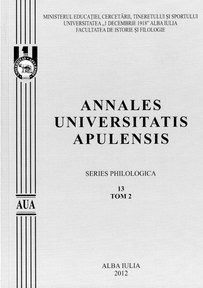Wartime Diaries: Parallel Between Ann Franck’s Diary and Zlata’s Diary
Wartime Diaries: Parallel Between Ann Franck’s Diary and Zlata’s Diary
Author(s): Ramona DemarcsekSubject(s): Literary Texts
Published by: Universitatea »1 Decembrie 1918« Alba Iulia
Keywords: diary; author; narrator; character; metacharacter
Summary/Abstract: The obvious similarity of the two diaries resides in the fact that both authors are young girls who tell the story of a war in a very personal manner, namely through diary notes. It is obviously not the same war, yet that is not of great importance. What is really striking is the fact that these two school girls, living in two different worlds and two different areas, both find themselves exposed to one of humanity’s worst experiences, the war, and both find the same refuge from its atrocities: the pages of the notebook – the personal diary. This paper will explore the similarities (and/or dissimilarities) between the two diaries from the perspective of the author acting as character within the diary, the author as narrator, and that of the diary as a character within the diary. The focus will fall mainly upon these characters – the author, the narrator, and the diary – as well as upon the reader. In diaries the author and the narrator are basically the same individual, yet there is an important difference between the portrait that the author creates for himself/herself and the portrait that the reader can identify between the lines. The result of this process is a complex character viewed from two different standpoints. The fact that the diary itself becomes a character within the diary is not as uncommon in diarism as one might expect, yet most diarists prefer to get involved into a fictional dialogue with themselves. In the case of these two young diarists the dialogue stays fictional, but the ‘interlocutors’ are the author/writer and the diary which is personalized and even given a name. The psychological mechanism behind this artifice is fundamentally the same in all diarists, no matter the age of the authors. Yet in the case of the two diarists under discussion the need for an interlocutor is stronger, given the extreme circumstances under which the diaries were written. The two young diarists were paralleled before, Zlata having been named “the Anne Frank of Sarajevo”, but the novelty of this paper is that it compares the two diaries from a different perspective, namely that of characters acting inside the diaries, and not just any characters but the author/narrator and the metacharacter ‘diary’.
Journal: Annales Universitatis Apulensis. Series Philologica
- Issue Year: 13/2012
- Issue No: 2
- Page Range: 65-72
- Page Count: 8
- Language: English

